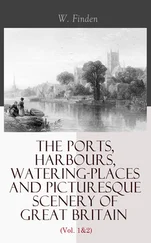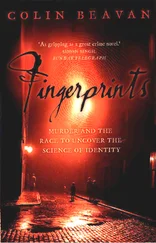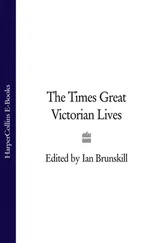(1984).
110
A murder like this could reveal. . . middle-class house.
In an article about the popularity of detective stories, Bertolt Brecht wrote: 'We gain our knowledge of life in a catastrophic form. History is written
after
catastrophes . . . The death has taken place. What had been brewing beforehand? What had happened? Why has a situation arisen? All this can now perhaps be deduced.' Published in 1976 in Brecht's collected works and quoted in
Delightful Murder: A Social History of the Crime Story
(1984) by Ernest Mandel.
110
A month before the murder . . . oftener, a family'. Notes on Nursing
quoted in the
Devizes and Wiltshire Gazette
of 31 May 1860.
113
In the evening . . . were still green.
Information on weather and crops from the
Trowbridge and North Wilts Advertiser
of 21 July 1860, and the agricultural report for July in the
Devizes and Wiltshire Gazette
of 2 August 1860.
CHAPTER 9
115
The chairman of the magistrates . . . the services of a detective.
Information about magistrates from
The Book of Trowbridge
(1984) by Kenneth Rogers and the census of 1861.
116
Shortly before three o'clock . . . no further remark to me,' said Whicher.
From Whicher's testimony to the magistrates later that day.
120
'It's no use . . . given way.
From 'A Detective Police Party',
House-hold Words,
27 July 1850.
120
Dolly was a clever, energetic man . . . the first police-station library.
From the census of 1841 and
Critical Years at the Yard: The Career of Frederick Williamson of the Detective Department and the CID
(1956) by Belton Cobb.
120
Dolly shared lodgings . . . sixteen other single policemen.
From the census of 1861.
121
One of these, Tim Cavanagh . . . a rabbit from a near neighbour.'
From
Scotland Yard Past and Present
(1893) by Timothy Cavanagh.
122
His colleague Stephen Thornton . . . some of the passengers.
From
The Times,
18 November 1837.
122
In 1859 an eleven-year-old girl . . . depraved imagination'.
From the
Annual Register
of 1860.
123
On Saturday morning . . . schoolfriends.
From expenses claims in MEPO 3/61, the census of 1841 and the census of 1861.
124
'She has spoken to me . . . deceased child.'
From Louisa Hatherill's testimony at the Wiltshire magistrates' court, 27 July 1860.
125
While Constance was in gaol . . . taken into custody.
This rumour was reported in the
Bristol Daily Post
of 24 July 1860.
126
Whicher was careful . . . other policemen.
Fifteen years earlier, in March 1845, Mayne had reprimanded Whicher and his fellow Detective-Sergeant Henry Smith for showing a want of respect to senior officers that was 'most indiscreet and legally unjustifiable'. As it was the first time that any detectives 'had improperly come into collision' with their uniformed colleagues, Mayne let the pair off with a caution, but he warned that any future offence would be dealt with severely. From MEPO 7/7, police orders and notices from the office of the Commissioner, cited in
The Rise of Scotland Yard: A History of the Metropolitan Police
(1956) by Douglas G. Browne.
129
As for her supposed lover . . . or the Neighbourhood'.
In a note by Whicher on a letter from Sir John Eardley Wilmot on 16 August 1860, in MEPO 3/61.
129
the fullest version . . . fishing in the river.
Reported in the
Somerset and Wilts Journal,
13 October 1860.
129
In the county court the previous month . . . rival dairy farmer.
From the
Frome Times,
20 June 1860.
CHAPTER 10
134
A man in North Leverton . . . She fainted.
Account of the Sarah Drake case from reports in
The Times,
8 December 1849 to 10 January 1850.
136
In the spring of 1860 . . .the name of her employer.
Reported in the
News of the World,
3 June 1860.
137
Alienists detailed . . . cold cunning.
Monomania was a condition identified by the French physician Jean-Etienne Dominique Esquirol in 1808. See
Embodied Selves: An Anthology of Psychological Texts 1830-1890
(1998), edited by Jenny Bourne Taylor and Sally Shuttleworth.
137
The Times
. . . the key to the asylum?'
On 22 July 1853.
137
It was even suggested . . . puerperal mania.
Stapleton reported this rumour in his book of 1861.
137
Perhaps the killer had a double consciousness.
For double consciousness and crime, see
Unconscious Crime: Mental Absence and Criminal Responsibility in Victorian London
(2003) by Joel Peter Eigen.
138
'Experience has shown . . . seemingly irrelevant.'
In 'The Mystery of Marie Roget' (1842) by Edgar Allan Poe.
138
'I
made a private inquiry . . . as a trifle yet.'
Arthur Conan Doyle's private detective Sherlock Holmes adopted the same techniques: 'You know my method. It is based on the observation of trifles'; 'there is nothing so important as trifles' - from 'The Man with the Twisted Lip' (1891).
138
He asked Sarah Cox . . . within the hour.
From Whicher's reports in MEPO 3/61 and Cox's testimony at the Wiltshire magistrates' court on 27 July 1860.
139
'When I am deeply perplexed . . . work out my problems. 'From Diary of an Ex-Detective
(1859), 'edited' by Charles Martel (in fact written by the New Bond Street bookseller Thomas Delf). In a similar passage in Waters'
Experiences of a Real Detective
(1862) the narrator mulls over a case as if assembling a jigsaw or a collage: 'I lay down on a sofa and had a good think; put together, now this way, now that way, the different items, scraps, and hints, furnished me, in order to ascertain how they held together, and what, as a whole, they seemed to be like.'
141
As Mr Bucket says . . . point of view.'
A detective's greatest weapon, said Dickens, was his ingenuity. 'For ever on the watch, with their wits stretched to the utmost, these officers have . . . to set themselves against every novelty of trickery and dexterity that the combined imaginations of all the lawless rascals in England can devise, and to keep pace with every such invention that comes out.' From the second part of 'A Detective Police Party',
House-hold Words,
10 August 1850.
In
The Perfect Murder
(1989) David Lehman observed that 'the detective novel took murder out of the ethical realm and put it into the realm of aesthetics. Murder in a murder mystery becomes a kind of poetic conceit, often quite a baroque one; the criminal is an artist, the detective an aesthete and critic, and the blundering policeman a philistine.' See also
The Aesthetics of Murder: A Study in Romantic Literature and Contemporary Culture
(1991) by Joel Black.
142
The nightdress was his missing link . . . evolved from apes.
A nightdress that tied a respectable adolescent girl to murder, like the bones that would prove the connection between men and monkeys, was a terrible object, to be feared as much as sought. For the anxieties aroused by the idea of the missing link, see
Читать дальше












